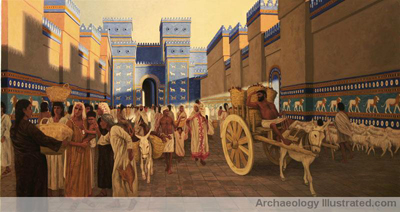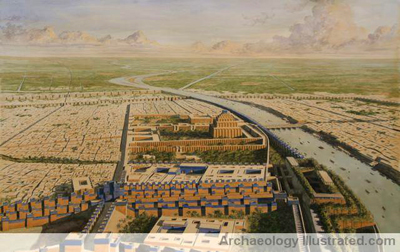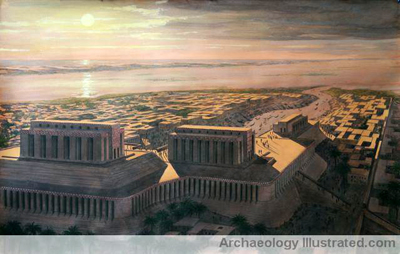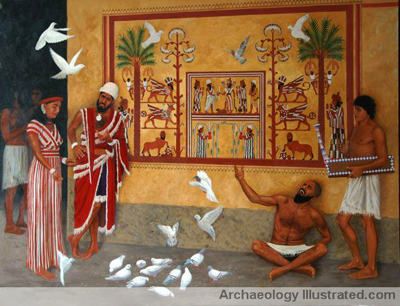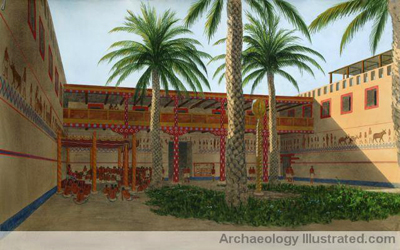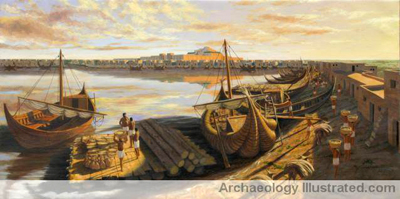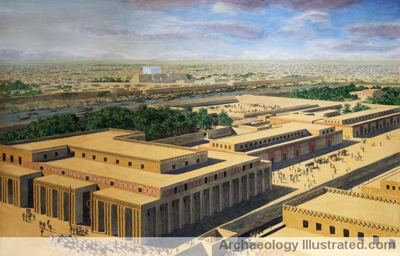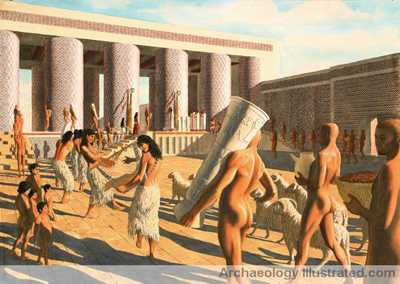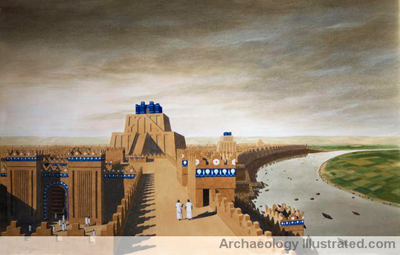Reconstructions in Art
by Balage
|
With the addition of the 'Reconstuctions in Art' section, enenuru.net has been graced with the chance to share with the ANE community our enthusiasm for the great works and visual achievements to be featured below. Having spent years in a somewhat troubled search for inspired fine art which truly engages ones taste for the Oriental, I have the very strong feeling that there is not another series of Mesopotamian themed art like this to be found, and no better chance to visualize those far off days! We would therefore express our appreciation to the artist, Balage, for his works and for his generosity in freely sharing these items with us.
|
For perspective on Sumerian culture and magic, click here to return to enenuru.net
The Reconstructions
click at the
pictures for bigger versions |
Additional Information |
|
Ishtar Gate Babylon |
||
Babylon aerial |
||
Eridu |
Eridu, pictured here in Balage's wonderful reconstruction, was
considered by the Sumerians |
|
Eridu-Enki's boat
trip |
Black and Green 1992 record that the gods had boats, and that
these were actually |
|
Zimri Lim and Mari
wall painting, 18th cent. BC |
||
Mari palace |
||
Mari aerial |
||
Ur harbour, 2100
BC |
In this depiction of the Harbor at Ur, we notice that the boat's
sails are quite a prominent feature. |
|
Ur Sacred Precinct |
The Sacred Precinct at Ur is a temple complex
the important aspects of which are the Ziggurat of which Nanna's
E-kis-nu-gal is a part, the temple of Nanna's
wife Ningal, and the Gipar which was a special housing for entu priestesses and their staff. Read more : |
|
Uruk |
In discussing the origin of Cities, Marc Van de Mieroop says
that Uruk, which gave its name to the Uruk period, was essentially
"the first city in |
|
Uruk Procession |
Jacobsen in his exploration of Early religion (see "The Treasure of Darkness" 1976) discusses some of the surrounding contexts of the item experts refer to as "the Uruk Vase" of which Balage has made a beautiful tribute to in this painting "The Uruk Procession." To clarify, the painting features a man carrying the vase in the foreground; and the surrounding and background is inspired on the image contained on the Vase itself. Jacobsen had written about the Vase: |
|
Ashur, Old Capital
of the Assyrian Empire. 8th Century BC |
||
Ishtar Gate in
Babylon. Jewish Exiles Enter the City. 586 BC |
||
Babylon. Gate to
Etemenanki, the Tower of Babel. 6th century BC |
||
Enheduanna and
Drunken Priestesses |
